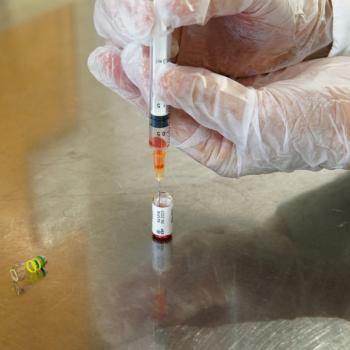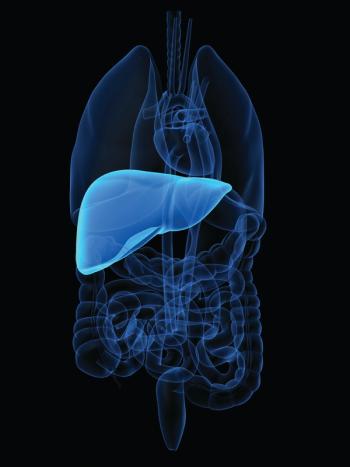
- ONCOLOGY Vol 13 No 4
- Volume 13
- Issue 4
Brachytherapy Boost Techniques for Locally Advanced Prostate Cancer
Dr. Vicini and colleagues provide an excellent review of the experience to date utilizing interstitial brachytherapy in the treatment of locally advanced prostate cancer. As the authors mention, ample evidence suggests the existence of a dose-
Dr. Vicini and colleagues provide an excellent review of the experience to date utilizing interstitial brachytherapy in the treatment of locally advanced prostate cancer. As the authors mention, ample evidence suggests the existence of a dose-response relationship of radiation in the treatment of prostate cancer, and various methods, including intensity-modulated radiotherapy have been investigated in order to escalate dose with acceptable toxicity levels.[1]
Due to the anatomical constraints imposed by the proximity of the bladder and rectum to the prostate and by the vagaries of organ motion, interstitial brachytherapy may prove to be the ultimate modality for providing conformal treatment. This technique may permit dose escalation with a lowered risk of acute and chronic late effects, since radioactive sources can be placed with precision within the target volume, thereby avoiding high-dose external-beam radiotherapy, which must traverse the body to reach a deep-seated target. In addition, interstitial brachytherapy avoids marginal misses, since sources or catheters are imaged within the prostate. This removes the uncertainty that comes with highly conformal treatment margins and organ motion.
Defining the Problem
Prostate cancer continues to be a fascinating and challenging disease to treat due, in part, to its heterogeneous natural history. As is well known, many men harbor clinically occult, indolent prostate cancer, which, if untreated, may confer a negative impact on their quality of life. Nonetheless, prostate cancer looms as the second leading cause of cancer mortality among American men. Defining the high-risk population among those diagnosed with prostate cancer is critical.
Stamey and colleagues recently reported that the 5-year survival rate among men treated with radical prostatectomy plummets to 37% among men with clinical stage T2b disease, owing to their increased likelihood of harboring a significant component of Gleason grade 4 disease and their increased tumor volume.[2] Other investigators have shown tumor stage and elevated pretreatment prostate-specific antigen (PSA) level to be of paramount importance in assessing risk. At the Seattle Prostate Institute, we define high-risk patients as those with: (1) Gleason summed score of 7, (2) PSA > 10 ng/mL, or (3) stage T2c/T3 disease.
Permanent Seed vs HDR Temporary Implant
At our institution, we have active programs in both the permanent seed and temporary high-dose-rate (HDR) implant arenas. For patients with early-stage, favorable disease we tend to recommend a permanent iodine-125 or palladium-103 seed implant alone. For men with high-risk features who are interested in brachytherapy, we offer either (1) external-beam therapy to 45 Gy in 5 weeks, followed by permanent seed implant; or (2) an HDR temporary implant, followed by external-beam therapy to identical dose and volume.
Both brachytherapy techniques have advantages and disadvantages. Without a randomized trial, it is difficult to conclude that one approach is superior to the other.
Permanent seed brachytherapy boost has the advantage of providing a large dose to the prostate gland. At our institution, for permanent seed boosts, we typically implant with palladium-103 to a prescription dose of 90 Gy or iodine-125 to a dose of 110 Gy. In addition, this form of boost therapy can be accomplished in a single, short, outpatient procedure.
As the authors point out, this technique cannot be modified after the implant procedure and, thus, is physician-dependent. Acute toxicity may be more pronounced and protracted compared with a temporary HDR implant. It appears that anatomical constraints imposed by pubic arch interference are more limiting. Finally, permanent seeds can be reliably placed only within the prostate tissues; thus, coverage of extracapsular disease must be accomplished by external-beam therapy alone.
An HDR temporary implant has the advantage of post-implant planning. This permits manipulation of dwell times in order to control dose distribution to the target volume, as well as to critical normal structures, such as the rectum and urethra. In addition, dose prescriptions permit differential treatment of the peripheral zone, where greater bulk of disease may be encountered. Since catheters can be reliably placed adjacent to the prostatic capsule, extraprostatic treatment can be accomplished.
Lastly, emerging radiobiological data suggest that prostate cancer may behave akin to a late-responding tissue and, thus, may be more susceptible to treatment with few, relatively large fractions.[3] Early experience from this institution and others reveals encouraging results, as referenced in the article by Vicini et al.
High-dose-rate brachytherapy also has several disadvantages. At present, boost treatment requires an overnight hospital stay, multiple implant procedures, or, in some centers, both. Theoretical risks include deep-venous thrombosis, nosocomial infections, and bleeding. Interpreting data from HDR boost therapy in prostate cancer is difficult due to short follow-up and differences in patient selection between series and within reports of other treatment modalities. Finally, in this era of managed care, HDR treatment is a capital- and physician-intensive endeavor and, thus, requires considerable institutional commitment in order to be successful.
Technical Considerations With HDR Temporary Implants
As Vicini and colleagues note, several different imaging strategies have been employed in prostatic HDR boost therapy. Intraoperative ultrasound has proven very useful for guiding placement of interstitial catheters. We use ultrasound in combination with a template technique in order to place approximately 20 to 23 catheters. Post-implant, we have found that computed tomographic (CT) scanning is crucial for providing anatomical information on the position of catheters in relationship to the prostate, as well as for defining adjacent organs.
We have adopted a highly differential treatment approach in which the target volume is covered by the prescription dose while the peripheral zone is preferentially boosted to approximately 150% of the prescription dose. Our present protocol calls for three fractions of 600 cGy over a 24-hour hospital stay with a minimum 6-hour interva between fractionsl. High-dose-rate brachytherapy is then followed by a 4,500-cGy external-beam radiotherapy course administered in 180-cGy fractions. With this approach, ³ 90% target coverage is readily achievable while operative procedure time is kept to a minimum.
Conclusions
We agree with Vicini and colleagues that interstitial brachytherapy remains a viable boost treatment option for high-risk prostate cancer. As experience grows and follow-up is extended, firmer conclusions may emerge. At present, both permanent seed and temporary HDR brachytherapy boost approaches demonstrate advantages and limitations. Absent data from a randomized trial, it is difficult to determine whether one approach is superior to the other.
Present techniques are yielding encouraging results with quite acceptable acute and late complication rates. Clearly, new strategies will emerge and new technologic breakthroughs will occur that will continue to advance brachytherapy as a component of therapy for high-risk prostate cancer.
References:
1. Hanley J, Lumley MA, Mageras GS, et al: Measurement of patient positioning errors in three-dimensional conformal radiotherapy of the prostate. Int J Radiat Oncol Biol Phys 37:435-444, 1997
2. Stamey TA, Sozen TS, Yemoto CM, et al: Classification of localized untreated prostate cancer based on 791 men treated only with radical prostatectomy: Common ground for therapeutic trials and TNM subgroups. J Urol 159:2009-2012, 1998.
3. Duchesne GM, Peters LJ: What is the a/b ratio for postate cancer?a rationale for hyperfractionated high-dose rate brachytherapy. Int J Radiat Biol Phys, 1999 (in press).
Articles in this issue
over 26 years ago
Surgeons Use New Technique to “Melt” Liver Tumorsover 26 years ago
Screening for Colorectal Cancer-United States, 1997over 26 years ago
Controversies in the Management of Intracranial Germinomasover 26 years ago
Controversies in the Management of Intracranial Germinomasover 26 years ago
Brachytherapy Boost Techniques for Locally Advanced Prostate CancerNewsletter
Stay up to date on recent advances in the multidisciplinary approach to cancer.


















































































